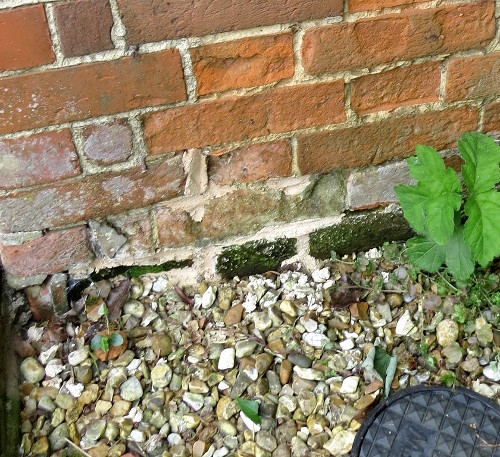Owners of older and period properties have a wide range of issues to consider when carrying out general maintenance. Among the issues that are less likely to affect newer properties is the external condition of the brickwork.
The term for bricks that suffer from a crumbling external face is “spalling”.
Bricks become softer with age and older methods of brick manufacture meant that the older bricks were softer than a more modern brick. They often contained inconsistencies which gave them their distinctive character. Consequently, older bricks are much more susceptible to spalling than newer bricks.
Some older bricks have a harder face, but even these bricks are usually softer and more porous behind the faces. Prior to modern brick making methods, up to around 1860, bricks were hand made in moulds then fired in kilns fuelled by coal or wood.
More modern, machine made bricks came into use in the mid/late 19th century. These were fired in hotter kilns and formed harder bricks which are less porous and more suitable for cement based concrete mortars. Modern bricks are subject to a greater quality control in production and have usually been fired at a higher temperature.
It is normal for bricks to expand and contract in different weather conditions when moisture and temperature levels vary considerably throughout the seasons. Most bricks will over time become porous to allow some moisture in.
Most mortar with older bricks was laid on lime-based mortar and with lime pointing which is softer and allowed moisture that has already entered the wall to get wicked away and evaporate. This process helped reduce the decay to the faces of bricks limiting the erosion via a process of freeze thaw, which is a primary cause of spalling.
When older bricks have been repointed using a harder, less porous material than the brick, such as portland cement based mortar, the bricks are no longer able to dry out and are also held more rigidly. This means the bricks cannot expand and contract the tiny amounts that can cause the brick’s structure to compress, crumble and spall. (This is mainly due to moisture not being wicked away from the wall through the jointing.)
General builders are often less familiar with the particular needs of older buildings and can inadvertently use inappropriate materials that will go on to cause problems.
Specialists in carrying out work on older properties will be aware of the particular needs of older brick buildings. This includes the use of suitable mortar when carrying out repair work.
It is not uncommon to see damage to bricks “rectified” using concrete mortar over the face of the crumbling brick as well as between the bricks. This was particularly the case during works carried out over the last century.
Walls which are permanently wet are particularly susceptible to spalling. The walls can be wet caused by matters as diverse as gutters not functioning appropriately or areas close to the ground which have no damp proof course. If the ground drainage conditions are not appropriate, water may be permanently held in the lower levels of the wall waiting for the frost to do the damage.

Indeed, sometimes spalling can occur where there is a damp proof course but there are pointing repairs with portland cement based mortar. This can hold the moisture in the wall, again waiting for the frost to do the worst of the damage.
Brick spalling is most noticeable on the outside surface of the brick but it can also occur hidden from view. For instance, within the structure of a chimney.
The bricks towards the lower part of the wall are most likely to show signs of spalling first when a wall has been repointed.
To prevent further issues, the problem should be considered urgent and addressed promptly.
Always inspect to make sure that the source of water ingress is appropriately managed or stopped before carrying out the repairs to the bricks themselves.
Inappropriate mortar should be removed and any badly affected bricks should be replaced. If a suitable replacement cannot be found, it might be possible to turn the brick around if the remaining structure is sound. The mortar should be replaced with a softer, lime-based mortar.
Failure to properly address brick spalling will ultimately lead to further damp ingress, mould issues within the property, lower the thermal efficiency of the wall and can result in serious wall movement and cracking.
If in any doubt, ask an independent Chartered Surveyor to inspect the fault to establish the cause of the issue.


